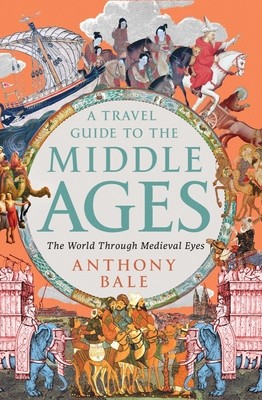The Middle Ages, often envisioned as a time of limited mobility, actually saw a vibrant tapestry of travel undertaken by people from all walks of life. While wealthy nobles and warriors venturing to foreign lands might be the first images that come to mind, travel was accessible to a far broader spectrum of society, including the poor, devout pilgrims, and enterprising merchants. Driven by diverse motivations, these travelers embarked on journeys to various corners of the world, meticulously documenting their experiences to inform and inspire future generations. Their accounts offer invaluable insights into the known and unknown realms of the medieval world. Anthony Bale’s “A Travel Guide To The Middle Ages: The World Through Medieval Eyes” compiles many of these accounts into a single, comprehensive volume.
Bale sets the stage by providing readers with essential background information on the origins of the travel guide genre. He elucidates how medieval people perceived directions and understood the world’s layout through mappae mundi, the medieval European world maps. Bale also explores the genesis of one of the earliest globes, the Behaim Globe (also known as the Erdapfel), crafted by Martin Behaim, who hailed from a family of merchants. This globe provided a tangible representation of the world as it was then understood, reflecting the era’s burgeoning geographical knowledge.
Pilgrimage, Trade, and Exploration
The book’s narrative journey begins in England, a common departure point for pilgrims bound for Rome and Jerusalem. Bale guides readers through key European cities, significant pilgrimage sites, and perilous mountain passes, offering practical advice on navigating foreign languages and currency exchange rates. This section provides a glimpse into the challenges and logistics of medieval travel.
 Pilgrims traveling to Jerusalem in the Middle Ages, showcasing the attire and challenges faced.
Pilgrims traveling to Jerusalem in the Middle Ages, showcasing the attire and challenges faced.
As the journey progresses to Italy and eventually Jerusalem, the focus shifts from pilgrimage to exploration and trade. Bale draws heavily on the testimonies of pilgrims, merchants, and diplomats to paint a vivid picture of Westerners venturing eastward, reaching as far as Japan (Cipangu) and Ethiopia in Africa. These accounts reveal the motivations, challenges, and cultural exchanges that characterized medieval travel. Merchants sought new markets and goods, while diplomats forged alliances and gathered intelligence.
Medieval Perspectives on the World
Bale’s book delves into how medieval Europeans perceived the world through their travels. The accounts reveal a mix of accurate observations, fantastical beliefs, and cultural biases. Travelers often encountered unfamiliar customs, languages, and landscapes, leading to both wonder and misunderstanding. These narratives offer a unique window into the medieval worldview.
The dangers faced by medieval travelers were very real. Journeys were often long and arduous, fraught with perils such as bandits, pirates, and disease. Travelers had to be resourceful and adaptable to survive. Yet, despite these challenges, they persevered, driven by a thirst for knowledge, religious devotion, and economic opportunity.
Expanding Horizons: East Meets West
While the book primarily focuses on Western travelers heading east, it also includes glimpses of Eastern travelers journeying westward. Although these accounts are fewer, they offer a valuable counterpoint, illustrating the two-way flow of people and ideas in the medieval world. It is true that a greater emphasis on these Eastern perspectives and the inclusion of more female voices could have further enriched the narrative.
A Gateway to Understanding Medieval Travel
Overall, “A Travel Guide to the Middle Ages” is an informative and engaging exploration of medieval travel. It provides a fascinating glimpse into how people in the Middle Ages perceived the world around them. While some sections may be dense, the book serves as an excellent introduction to the topic for those interested in learning more about medieval European perspectives on travel and the world beyond. Anthony Bale’s work is an ideal starting point for anyone seeking to understand the motivations, experiences, and impact of travel during this transformative period in history. This book offers a valuable perspective on the interconnectedness of the medieval world.
